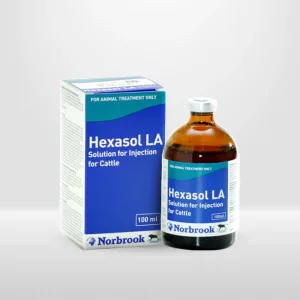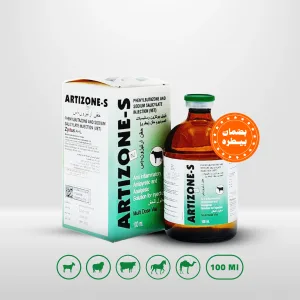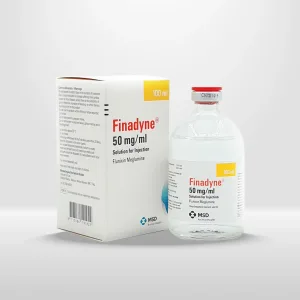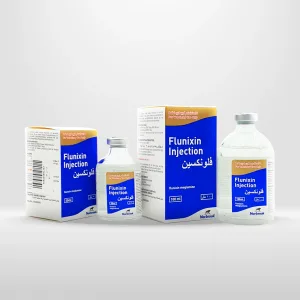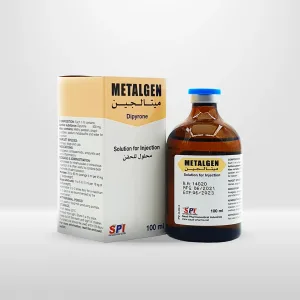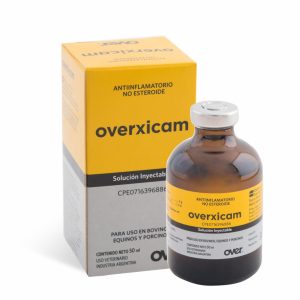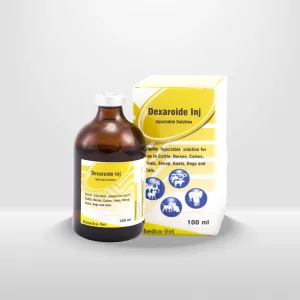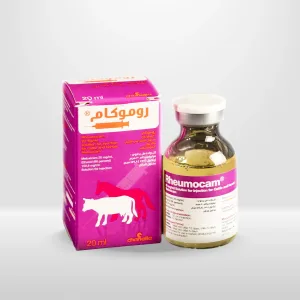
This shortcode is only available on vendor store pages.

This shortcode is only available on vendor store pages.
Horse Colic: Discover the Number One Killer of Horses!
- By: Byttara.com
- October 16, 2024
Colic in horses is one of the most dangerous diseases that can lead to death if not diagnosed and treated in time. Learn with us about the treatment of horse colic, its types, how to diagnose it, and how to prevent it.
To all horse riders, trainers, and breeders... This is a matter of life or death!
Browse the article headings:
What is horse colic?
Colic, very simply, is the pain that occurs in the abdominal area, usually due to problems in the horses’ digestive system, causing contractions in the intestines or severe pressure on the abdominal wall (but there are other causes unrelated to the digestive system that can lead to signs of colic in horses… don’t forget to check the causes of colic below to learn about them).
Although we said it’s an easy question, we need to clarify a common misconception when talking about colic in horses, which is to consider it a disease; the truth is that it is a symptom that appears in horses but is not a disease in itself.
We said it’s pain in the abdominal area… but this is a broad general expression; because this painful colic is caused by multiple reasons that vary in severity, which leads us to the next question…
To all horse riders, trainers, and breeders... This is a matter of life or death!
Colic in horses
Spasmodic or obstructive colic in horses.
(Resulting from the accumulation of food or other materials in the intestines) There are various ways in which this type can occur, ultimately resulting in the intestines being filled with undigested feed or possibly other elements. Here are the most common cases that cause it:
- Horses drinking insufficient amounts of water (especially in winter when water consumption decreases) can lead to dehydration, which is one of the main causes of colic.
- If a horse has a dental problem (such as not having its teeth floated regularly) that prevents it from chewing feed properly, partially digested feed can accumulate in the intestines, causing the horse to struggle to pass it.
- Consuming large quantities of feed or suddenly changing the type of feed.
- Horses swallowing foreign objects such as wood or stones, etc.
- Or perhaps it had worms in its intestines and took anti-parasitic medication, leading to the sudden death of these worms and their accumulation in its intestines in large numbers.
The large intestines of horses are not all of the same thickness; there are folds and areas where the thickness of the intestines is narrower than in other parts, making it difficult for these masses to pass through the narrow sections. However, we find that the pain resulting from the obstruction of the large intestines (cecum and colon) is less compared to the obstruction of the small intestines in horses. This is logical because the thickness of the small intestines is less than that of the large intestines.
Gas colic in horses.
If the feed accumulates in the large intestine, what happens if this feed has a high percentage of carbohydrates (grains) or is spoiled? It will ferment, producing gases that cause bloating and pain for the horse. The horse will show a noticeable swelling in the abdominal area due to the accumulation of these gases. Therefore, sudden changes in the feed that the horse is accustomed to (the quality of the feed, its quantity, and the number of meals per day) should be avoided, as beneficial bacteria in the intestine are sensitive to sudden changes in feed. A veterinarian uses a stomach tube to relieve these gases. The presence of this gas bloating may also cause the position of the large intestine to shift in the abdominal cavity or twist around itself, resulting in another highly dangerous type of horse colic!
Colic in horses caused by a displacement of the colon.
This is considered one of the most severe cases, where the colon twists around itself or intertwines with other surrounding organs (such as the kidney). This twisting or displacement can lead to a lack of blood flow to parts of the large intestine, causing tissue damage and resulting in the horse’s death if intervention for treatment is not provided! This twisting can occur suddenly and can be extremely painful. Additionally, one part of the intestine can become entangled with another (the large intestine alone is approximately seven meters long!).

Colic in horses: Spasmodic Colic
It is a common type among horses, where the intestines contract abnormally, causing severe pain to the horse. The cause of these sudden contractions is usually unknown (but they can be triggered by stressful events or a degree of dehydration).
Horse colic resulting from weakened or halted intestinal movement.
Intestinal movement is an involuntary action that occurs in the digestive system and is essential for the movement of food from one part to another, allowing for the digestion and utilization of food until waste is expelled from the body. Therefore, the cessation of this movement in a horse’s intestines leads to the accumulation of feed and the occurrence of colic. The cause of weakened or halted intestinal movement in horses is not clearly understood; however, it may be linked to infections in the horse’s digestive system or abdominal cavity, in which case the horse may be ill due to the toxins produced by the pathogens.
There are many other causes that may lead to the appearance of colic symptoms in horses, such as urinary bladder stones, laminitis (founder), or issues with the ovaries and uterus. As you can see, these are causes not related to the intestines and digestive system; however, they can still produce symptoms similar to those of horse colic, and the colic resulting from them is known as false colic. A veterinarian can differentiate between them through diagnosis. What are the symptoms that appear in the case of horse colic?
Symptoms of Horse Colic
The signs of colic vary depending on its severity and the cause of its occurrence, such as:
في الحــالة الـخـــفـــيفة
- يبدو على الخيل عدم الراحة.
- تقوم بركل الأرض بقوائمها الأمامية.
تقوم بلف الشفاه - (تسمى استجابة فليهمنflehmen reflex).
- وربما تلاحظ نظر الخيل لمنطقة البطن
- ( لأنها تشعر بالألم في هذه المنطقة).
توضح استجابة فليهمن في الخيل.
في حــالـــــة الــمــغــص متوسط الألم (أشــد من الخفيف)
- لتف الخيل حول نفسها.
- تكرر النظر لمنطقة البطن.
- تكرار أخذ وضعية التبول.
- تستلقي على ظهرها بشكل متكرر وتقوم مرة أخرى.
وسبب أنها تستلقي على ظهرها هو محاولتها لتخفيف الألم عن بطنها مما يشكل خطورة لإمكانية حدوث التواء في القولون مما فيتعقد وضع الحالة ويتطلب تدخل جراحي ولذلك يجب منع الخيل في هذه الحالة من الرقود والدوران السريع حول نفسها للحماية من التواء الأمعاء.
توضح استجابة فليهمن في الخيل.
في المــغــص الشــديــد
- ترمي الخيل بنفسها على الأرض بعنف.
- وتلتف بسرعة شديدة عنيفة.
- تتعرق وتزداد سرعة تنفسها.
- ونتيجة لهذه الحركات العنيفة تتعرض الخيل للإصابة بجروح وكسور كما أنها تشكل خطر على المدربين وسايس الخيل وهي في هذه الحالة.
توضح استجابة فليهمن في الخيل.
ماذا تفعل عند ملاحظة أعراض المغص عند الخيول؟
إذا كانت أعراض المغص خفيفة يمكنك أن تقوم بتمشية الخيل لمدة لا تزيد عن عشر دقائق حد أقصى لتخفيف التقلصات وتساعد هذه التمشية البسيطة على تحريك الأمعاء ومساعدة الخيول على التبرز (وإن لاحظت آلام في القدم عند الخيل أو عند الضلوع توقف فورًا) ؛ لكن إن لم تتحسن الأعراض خلال نصف ساعة أو الأسوأ أنها زادت في الشدة قم بالتواصل مباشرة مع الطبيب البيطري المختص
ويرجى الحذر أنه في حالة غيابك أو غياب سايس الخيل لعدة ساعات عن الخيول ثم ملاحظة أعراض المغص عند العودة للخيل فلابد من التواصل مع الطبيب البيطري فورًا (لأنك لا تعلم منذ متى والخيل تعاني من المغص وبالتالي قد تكون حياتها على المحك إن كانت الحالة شديدة).
ويجب إزالة العلف من أمام الخيل لتجنب زيادة المشكلة والأعراض سوءًا.
علاج مغص الخيل

ونأتي الآن لإجابة السؤال الذي ربما دخلت هنا للحصول عليها: ما هو علاج مغص الخيل؟ يقوم الطبيب البيطري بتشخيص الحالة واختيار طريقة التعامل الأمثل في العلاج ويعطي:
مسكن للألم مثل فلونكسين للخيل
(ولا يعطي المربي مسكنات الألم أو المهدئات دون استشارة الطبيب لأن بعض مسكنات الألم القوية تغطي على الأسباب الحقيقية الخطيرة التي تسبب المغص مثل التفاف الأمعاء على نفسها وتوقف الإمداد الدموي عن الجزء المصاب).
Out of stock
Synedem l Furosemide l Anti-inflammatory l for animals
Sold by الحصن الحصين البيطريةPHENYLARTHRITE | Phenylbutazone | Anti-inflammatory | horse, dog
Sold by الحصن الحصين البيطريةFinadyne 50mg/ml | Flunixin anti-inflammatory | horses, cattle
Sold by الحصن الحصين البيطريةFlunixin | anti-inflammatory for Cattle and Horses
Sold by الحصن الحصين البيطريةMelocam | meloxicam | Anti-inflammatory | for cattle & horses
Sold by الحصن الحصين البيطريةOut of stock
Metacam | Anti-inflammatory | for cows and horses
Sold by الحصن الحصين البيطريةMetalgen l Dipyrone | Anti-inflammatory and antipyretic | for animals
Sold by الحصن الحصين البيطريةOut of stock
Hyaluronan Bioveta l for arthritis in horses’ treatments
Sold by الحصن الحصين البيطريةOut of stock
overxicam| Meloxicam | anti inflammatory | for cattle and horses
Sold by الحصن الحصين البيطريةVOLTAVET | Diclofenac sodium | for mastitis
Sold by الحصن الحصين البيطريةOut of stock
dexona | Dexamethasone | veterinary anti-inflammatory & anti-allergic
Sold by الحصن الحصين البيطريةDexamethasone | Anti-inflamm tory and antipyretic | for animals
Sold by الحصن الحصين البيطريةDEXASONE SAV | Anti-inflammatory, antipyretic and analgesic
Sold by الحصن الحصين البيطرية- يقوم بتعليق المحاليل العلاجية اللازمة لحين عودة الأمعاء للعمل بشكل طبيعي.
يستخدم زيت برافين للخيل
- يقوم بتعليق المحاليل العلاجية اللازمة لحين عودة الأمعاء للعمل بشكل طبيعي.
Out of stock
Synedem l Furosemide l Anti-inflammatory l for animals
Sold by الحصن الحصين البيطريةPHENYLARTHRITE | Phenylbutazone | Anti-inflammatory | horse, dog
Sold by الحصن الحصين البيطريةFinadyne 50mg/ml | Flunixin anti-inflammatory | horses, cattle
Sold by الحصن الحصين البيطريةFlunixin | anti-inflammatory for Cattle and Horses
Sold by الحصن الحصين البيطريةMelocam | meloxicam | Anti-inflammatory | for cattle & horses
Sold by الحصن الحصين البيطريةOut of stock
Metacam | Anti-inflammatory | for cows and horses
Sold by الحصن الحصين البيطريةMetalgen l Dipyrone | Anti-inflammatory and antipyretic | for animals
Sold by الحصن الحصين البيطريةOut of stock
Hyaluronan Bioveta l for arthritis in horses’ treatments
Sold by الحصن الحصين البيطريةOut of stock
overxicam| Meloxicam | anti inflammatory | for cattle and horses
Sold by الحصن الحصين البيطريةVOLTAVET | Diclofenac sodium | for mastitis
Sold by الحصن الحصين البيطريةOut of stock
dexona | Dexamethasone | veterinary anti-inflammatory & anti-allergic
Sold by الحصن الحصين البيطريةDexamethasone | Anti-inflamm tory and antipyretic | for animals
Sold by الحصن الحصين البيطريةDEXASONE SAV | Anti-inflammatory, antipyretic and analgesic
Sold by الحصن الحصين البيطريةلم تــســتــجــب الــخــيل للعلاج؟
ونأتي الآن لإجابة السؤال الذي ربما دخلت هنا للحصول عليها: ما هو علاج مغص الخيل؟ يقوم الطبيب البيطري بتشخيص الحالة واختيار طريقة التعامل الأمثل في العلاج ويعطي:
المضاعفــات المــحتمل حدوثها بعد مغص الخيل
فينشأ عن تدمير جدار الأمعاء وصول إفرازات البكتيريا السامة لتجويف البطن ومجرى الدم فتسبب:
- ضعف الخيل والخمول العام.
- انخفاض ضغط الدم.
- ضعف الدورة الدموية.
- اضطرابات تجلط الدم.
- وفي النهاية نفوق الخيل.آخر ما سنجيبك عنه هو:
طرق لحماية خيلك من مغص الخيل
التــغــذيـــــة الــجــيــدة
- استخدام أعلاف عالية الجودة، وتجنب الأعلاف الفاسدة أو المتعفنة.
- توزيع الوجبات بشكل مناسب: إطعام الخيل كميات صغيرة ومتكررة بدلاً من وجبة كبيرة واحدة.
- حصول الخيل على كمية كافية من الألياف من التبن أو العشب.
- التغيير التدريجي في النظام الغذائي: عند تغيير نوع العلف أو النظام الغذائي، يجب أن يتم ذلك بشكل تدريجي لتجنب اضطرابات الجهاز الهضمي.
ميـاه الشــرب النـظيـفة
- توفير المياه النظيفة وجعلها متاحة في جميع الأوقات.
- تشجيع الخيول على الشرب في الطقس البارد عبر تدفئة الماء قليلاً.
النـــشـــاط البـــدنـــــــي
- الحفاظ على نشاط الخيول من خلال التمارين اليومية لتحسين حركة الأمعاء.
- تجنب النشاط البدني الشديد بعد تناول الطعام مباشرة.
الرعـــاية الــبـيــطـــريــة
- إجراء فحوصات بيطرية منتظمة للتأكد من صحة الخيل والكشف المبكر عن أي مشاكل صحية.
- الالتزام بجدول التطعيمات واستخدام مضادات الطفيليات بانتظام.
Monitoring the horse's behavior.
- Monitoring the horse while eating and looking for any signs of digestive problems.
- Recognizing the signs of colic (mentioned above) and acting quickly upon noticing them.
By following these tips, horse riders and breeders can reduce the risks of colic and ensure the health and safety of their horses.




